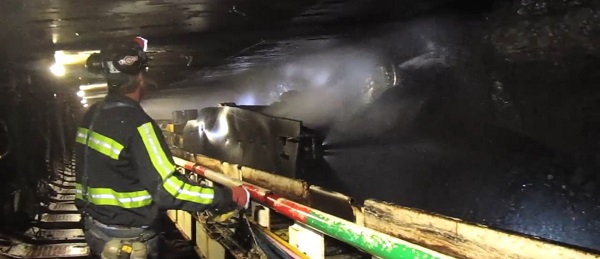Alberta
Alberta-made true crime podcast nearly tops Apple Podcast charts

We first told you about Curiouscast’s new podcast Crime Beat last week- it features crime reporter Nancy Hixt as she does a deep dive into some of the most high-profile cases she’s covered over the last two decades. Well as of Friday morning, Crime Beat has climbed nearly to the top of the Canadian Apple podcast charts. Be sure to add this one to your list- listen at the link below or subscribe to Crime Beat wherever you get your podcasts!
The name Randy Safronovich has a familiar ring in Central Alberta.
Twice the Sylvan Lake man has escaped attempts on his life; once in 1998 and again in 2013. His incredible story, “I Dodged a Bullet”, is featured here in the new podcast series Crime Beat.

Nancy Hixt – host of Crime Beat Podcast
The podcast is hosted by Nancy Hixt, a former RDTV reporter in Red Deer, and for the past 2 decades, crime reporter with Global TV Calgary.
On this episode of Crime Beat, Hixt takes you through the mind blowing twists and turns in the life of Sylvan Lake’s Randy Safronovich’s.
The Sylvan Lake businessman was the victim of a home invasion robbery in June 2013.
At one point, the offender put a gun to his head, and pulled the trigger.
By some miracle, the gun misfired and Safronovich survived. Safronovich jokes that he must have nine lives. It was a life-changing moment, but surprisingly, not the first time Safronovich managed to evade death.
“I guess I will write a book called I dodged a bullet twice now,” Safronovich told Global News.
Find out why the FBI was consulted for his case, in a real-life story that plays out more like a Hollywood film.
 “Nancy does a remarkable job taking you deep inside real cases she has worked on to give a voice to the victims of these crimes in a way only someone who was actually there could give,” said Chris “Dunner” Duncombe, Director of Streaming and Podcasting for Corus Entertainment. “We are so excited to bring Curiouscast listeners Crime Beat.”
“Nancy does a remarkable job taking you deep inside real cases she has worked on to give a voice to the victims of these crimes in a way only someone who was actually there could give,” said Chris “Dunner” Duncombe, Director of Streaming and Podcasting for Corus Entertainment. “We are so excited to bring Curiouscast listeners Crime Beat.”
“These stories have left a lasting mark on my life,” said Hixt. “There are many things I witness and experience while covering a case, and the Crime Beat podcast allows me to share those extra details with you, with a full behind-the-scenes look at all the twists and turns.”
Nancy Hixt has received numerous awards throughout her career covering Alberta’s crime beat. She was the winner of the 2015 Ron Laidlaw Award for Continuing Coverage – National Television, the 2016 Canadian Screen Award for Best Local Reportage, as well as the 2018 Radio Television Digital News Association Edward R. Murrow Award in the large-market television category.
Twitter: @nancyhixt
Facebook: https://www.facebook.com/NancyHixtCrimeBeat/
Email: [email protected]
Alberta
CPP another example of Albertans’ outsized contribution to Canada

From the Fraser Institute
By Tegan Hill
Amid the economic uncertainty fuelled by Trump’s trade war, its perhaps more important than ever to understand Alberta’s crucial role in the federation and its outsized contribution to programs such as the Canada Pension Plan (CPP).
From 1981 to 2022, Albertan’s net contribution to the CPP—meaning the amount Albertans paid into the program over and above what retirees in Alberta received in CPP payments—was $53.6 billion. In 2022 (the latest year of available data), Albertans’ net contribution to the CPP was $3.0 billion.
During that same period (1981 to 2022), British Columbia was the only other province where residents paid more into the CPP than retirees received in benefits—and Alberta’s contribution was six times greater than B.C.’s contribution. Put differently, residents in seven out of the nine provinces that participate in the CPP (Quebec has its own plan) receive more back in benefits than they contribute to the program.
Albertans pay an outsized contribution to federal and national programs, including the CPP because of the province’s relatively high rates of employment, higher average incomes and younger population (i.e. more workers pay into the CPP and less retirees take from it).
Put simply, Albertan workers have been helping fund the retirement of Canadians from coast to coast for decades, and without Alberta, the CPP would look much different.
How different?
If Alberta withdrew from the CPP and established its own standalone provincial pension plan, Alberta workers would receive the same retirement benefits but at a lower cost (i.e. lower CPP contribution rate deducted from our paycheques) than other Canadians, while the contribution rate—essentially the CPP tax rate—to fund the program would likely need to increase for the rest of the country to maintain the same benefits.
And given current demographic projections, immigration patterns and Alberta’s long history of leading the provinces in economic growth, Albertan workers will likely continue to pay more into the CPP than Albertan retirees get back from it.
Therefore, considering Alberta’s crucial role in national programs, the next federal government—whoever that may be—should undo and prevent policies that negatively impact the province and Albertans ability to contribute to Canada. Think of Bill C-69 (which imposes complex, uncertain and onerous review requirements on major energy projects), Bill C-48 (which bans large oil tankers off B.C.’s northern coast and limits access to Asian markets), an arbitrary cap on oil and gas emissions, numerous other “net-zero” targets, and so on.
Canada faces serious economic challenges, including a trade war with the United States. In times like this, it’s important to remember Alberta’s crucial role in the federation and the outsized contributions of Alberta workers to the wellbeing of Canadians across the country.
Alberta
Made in Alberta! Province makes it easier to support local products with Buy Local program

Show your Alberta side. Buy Local. |
When the going gets tough, Albertans stick together. That’s why Alberta’s government is launching a new campaign to benefit hard-working Albertans.
Global uncertainty is threatening the livelihoods of hard-working Alberta farmers, ranchers, processors and their families. The ‘Buy Local’ campaign, recently launched by Alberta’s government, encourages consumers to eat, drink and buy local to show our unified support for the province’s agriculture and food industry.
The government’s ‘Buy Local’ campaign encourages consumers to buy products from Alberta’s hard-working farmers, ranchers and food processors that produce safe, nutritious food for Albertans, Canadians and the world.
“It’s time to let these hard-working Albertans know we have their back. Now, more than ever, we need to shop local and buy made-in-Alberta products. The next time you are grocery shopping or go out for dinner or a drink with your friends or family, support local to demonstrate your Alberta pride. We are pleased tariffs don’t impact the ag industry right now and will keep advocating for our ag industry.”
Alberta’s government supports consumer choice. We are providing tools to help folks easily identify Alberta- and Canadian-made foods and products. Choosing local products keeps Albertans’ hard-earned dollars in our province. Whether it is farm-fresh vegetables, potatoes, honey, craft beer, frozen food or our world-renowned beef, Alberta has an abundance of fresh foods produced right on our doorstep.
Quick facts
- This summer, Albertans can support local at more than 150 farmers’ markets across the province and meet the folks who make, bake and grow our food.
- In March 2023, the Alberta government launched the ‘Made in Alberta’ voluntary food and beverage labelling program to support local agriculture and food sectors.
- Through direct connections with processors, the program has created the momentum to continue expanding consumer awareness about the ‘Made in Alberta’ label to help shoppers quickly identify foods and beverages produced in our province.
- Made in Alberta product catalogue website
Related information
-

 International1 day ago
International1 day agoPope Francis has died aged 88
-

 International1 day ago
International1 day agoPope Francis Dies on Day after Easter
-

 International24 hours ago
International24 hours agoJD Vance was one of the last people to meet Pope Francis
-

 2025 Federal Election1 day ago
2025 Federal Election1 day agoCarney’s budget means more debt than Trudeau’s
-

 2025 Federal Election13 hours ago
2025 Federal Election13 hours agoOttawa Confirms China interfering with 2025 federal election: Beijing Seeks to Block Joe Tay’s Election
-

 2025 Federal Election13 hours ago
2025 Federal Election13 hours agoReal Homes vs. Modular Shoeboxes: The Housing Battle Between Poilievre and Carney
-

 COVID-1913 hours ago
COVID-1913 hours agoNearly Half of “COVID-19 Deaths” Were Not Due to COVID-19 – Scientific Reports Journal
-

 2025 Federal Election12 hours ago
2025 Federal Election12 hours agoHow Canada’s Mainstream Media Lost the Public Trust







